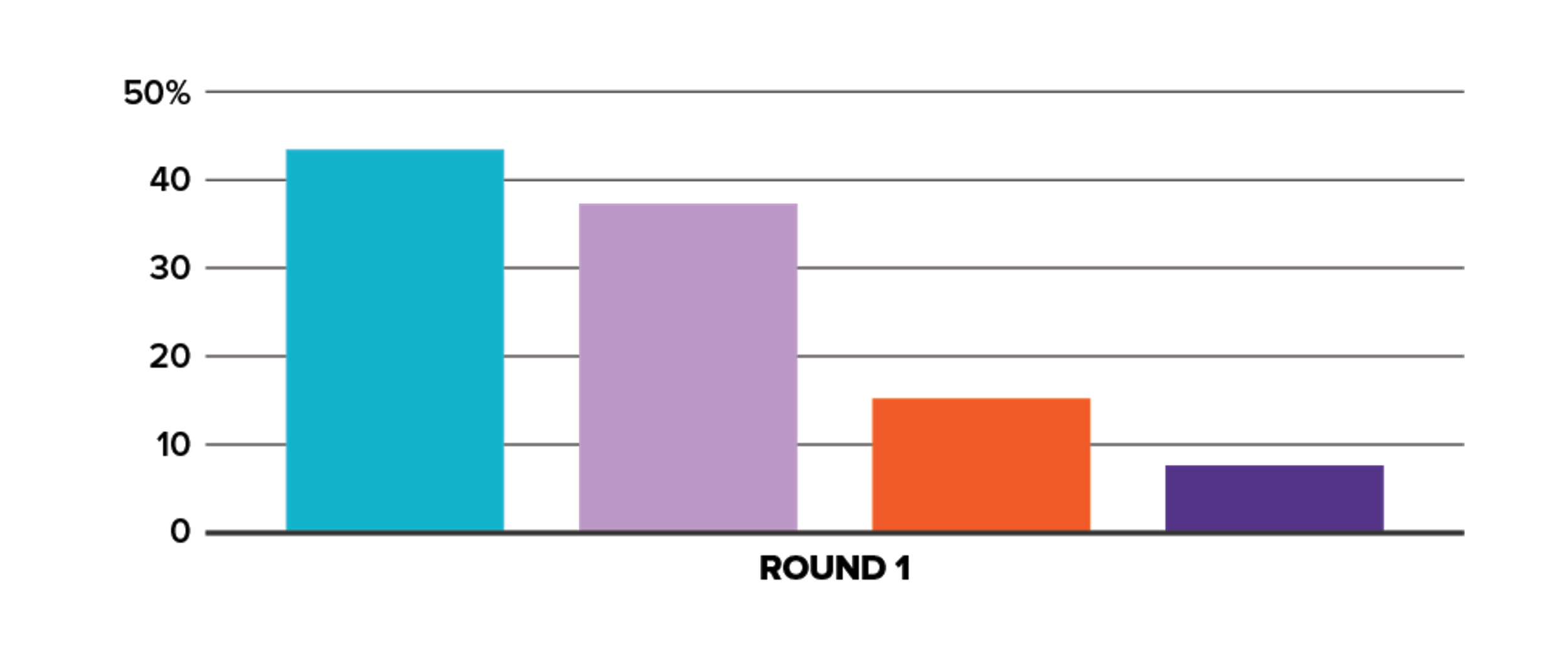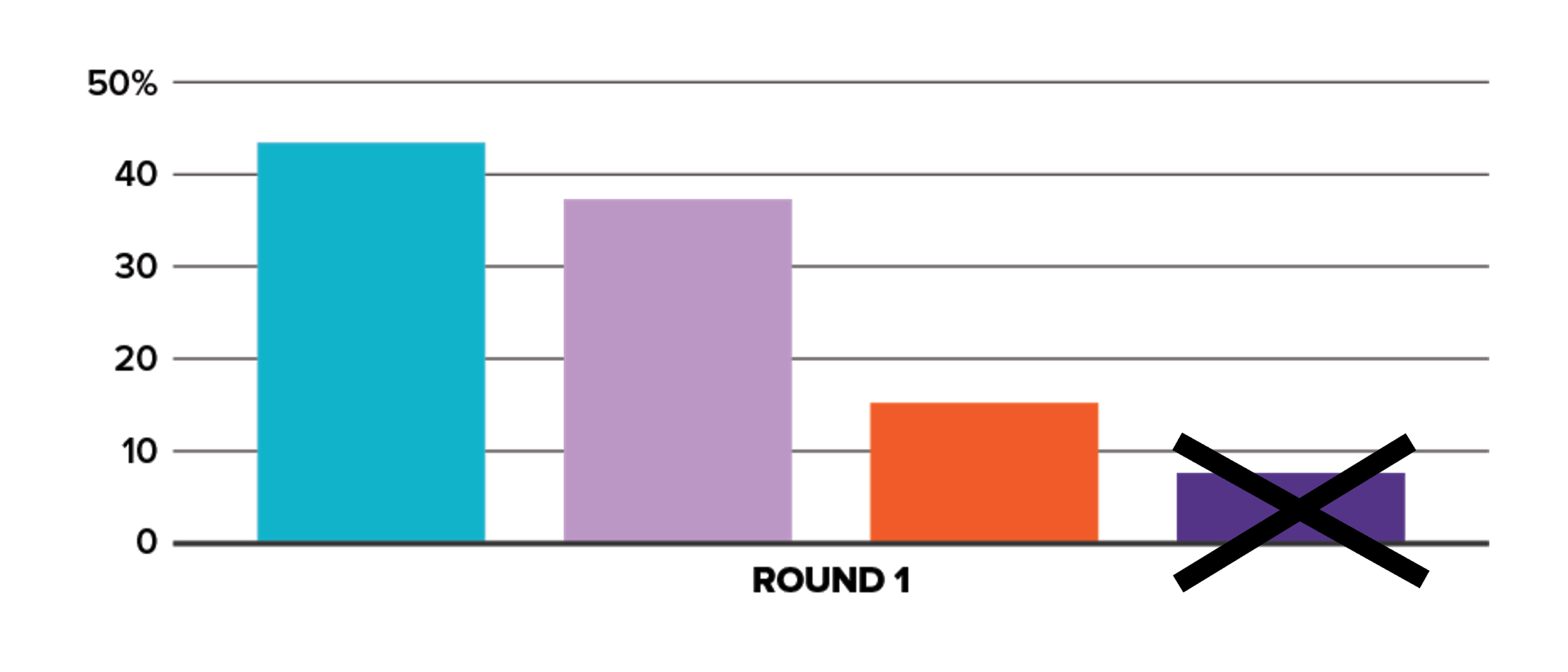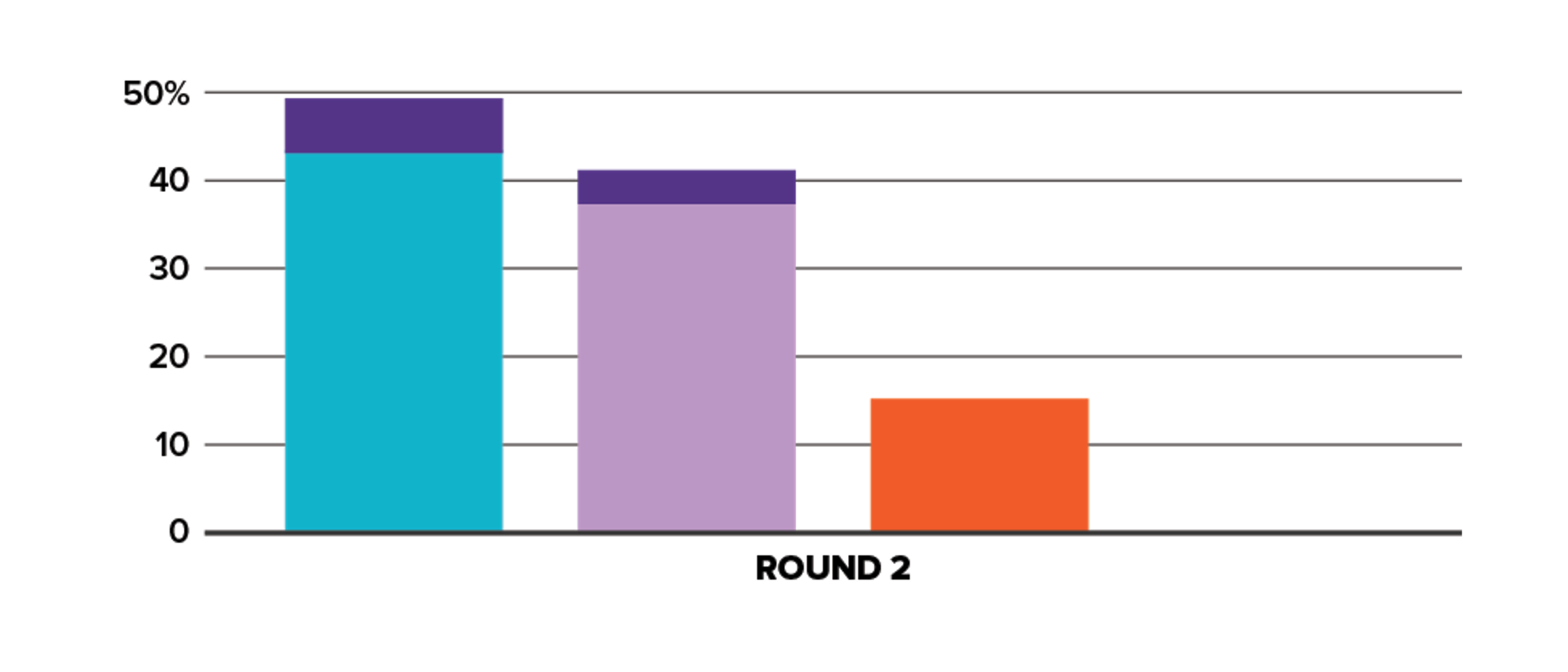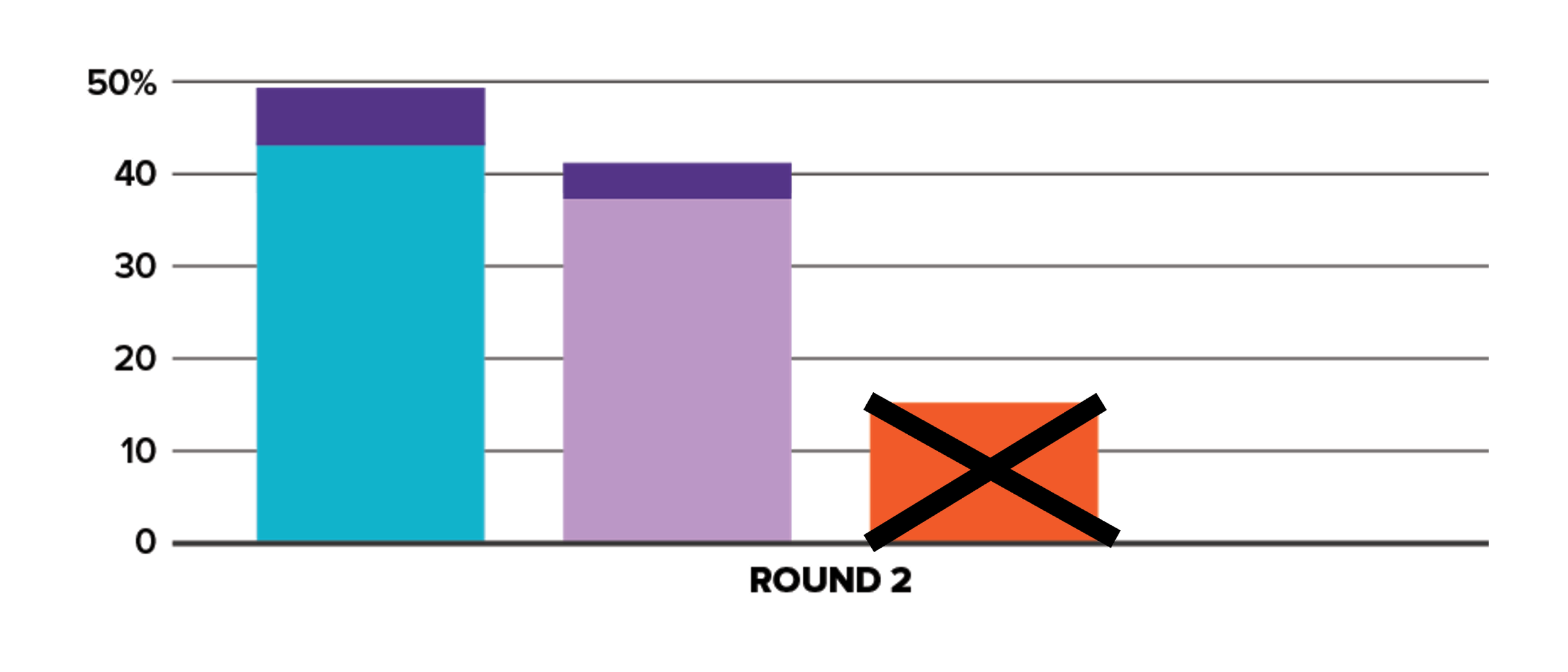Counting votes with ranked choice voting
In elections with a single winner
Ranked choice voting is a commonsense change to the ballot that enables a better voting experience, better campaigns, and ultimately, better government. But how does it work? Instead of picking just one candidate, a voter has the option to rank their candidates in order of preference — first, second, third, and so on.
Ballots are counted in rounds where candidates receiving the fewest top-choice votes are eliminated and their supporters’ ballots are then counted toward the next choice indicated on each. These rounds repeat until one candidate has the support of more than half of the voters.
Round 1
All first choice votes are counted.
Turquoise has the most votes, but no candidate has reached a majority (>50%) so we move to an instant run-off. The lowest vote-getter (purple) is eliminated.
Round 2
Everyone who voted for purple now has their vote counted for their next choice candidate (in this case, turquoise and lavender), but there’s still no majority winner.
Orange is now the lowest vote-getter, so they are eliminated and so we do it again. Another instant run-off!
Round 3
Everyone who voted for orange now has their vote counted for their next choice candidate.
Now Turquoise has over 50% of the vote and is the majority winner!
While turquoise was always in the lead and would have won in a traditional system, ranked choice voting allowed other candidates to run and for supporters to vote for them without potentially splitting the vote.
Want to see more of ranked choice voting in Virginia? Sign up to learn more or volunteer with us to spread the word about ranked choice voting across the Commonwealth.






